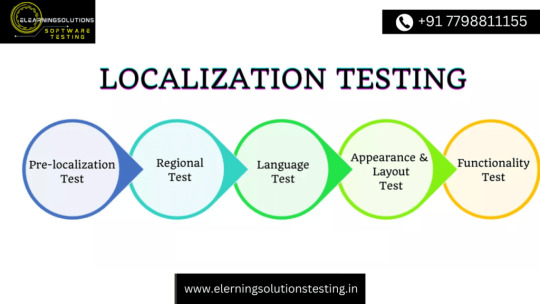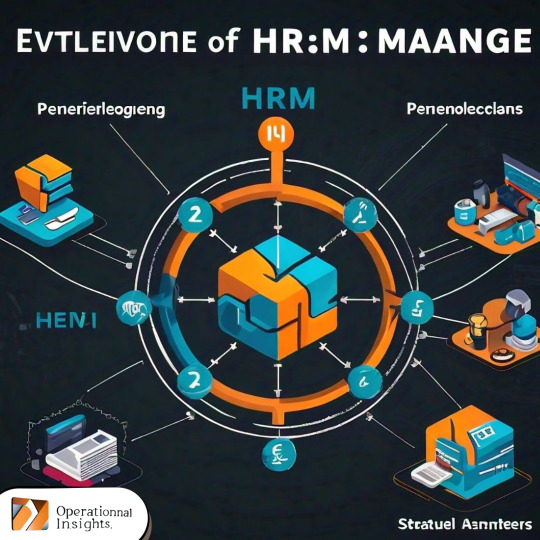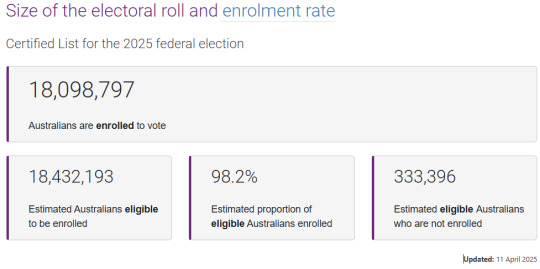#Internationalization
Explore tagged Tumblr posts
Text
In today's globalized world, websites need to support multiple languages to reach a wider audience. Laravel 12 provides built-in localization features that allow developers to create multi-language websites efficiently. This tutorial will guide you through setting up a multi-language website in Laravel 12 using language files, middleware, and dynamic content translation.
#Laravel12#MultiLanguage#Laravel#WebDevelopment#Localization#Internationalization#LaravelDevelopment#PHP#LaravelApp#MultiLanguageWebsite#WebsiteLocalization#BackendDevelopment#WebAppDevelopment#PHPFramework#LocalizationInLaravel#Translation#LaravelLocalization#LaravelTips#MultiLingualSupport#WebAppFeatures#LaravelBestPractices#MultiLanguageSupport#LaravelTutorial#LaravelProjects#LanguageSwitcher#FrontendBackendIntegration#WebAppArchitecture
0 notes
Text





China really did hit us with a cultural revolution by doing literally nothing. Seeing regular people from two geopolitical rivals do something as unprecedented as simply talk to each other is one of the few things giving me hope right now.
#united front#meme#anticapitalism#communism#socialism#imperialism#capitalism#memes#anti imperialism#china#tiktok#tiktok ban#xiahongshu#rednote#internationalism
16K notes
·
View notes
Text
Localization Testing and International Testing
Are you confused? An internationalized Product/application design is the one that can accommodate localized content such as characters in non-western letters, double-byte languages, an ability for text to expand as in European languages and contract as in Asian languages, display Unicode characters and have a database that supports Unicode characters etc. read more

#LocalizationTesting#InternationalTesting#SoftwareTesting#GlobalTesting#Localization#Internationalization#QualityAssurance#TestingForGlobalMarkets#QA#TechTesting
0 notes
Text









The Glassworker - Mano Animation Studios
Directed by - Usman Riaz
Pakistan’s First Ever 2D Hand Drawn Animated Film
Currently in Pakistani Theaters as of July 26 International release is coming soon <3
English Trailer || Urdu Trailer
#rei says stuff#the glassworker#pakistan#animated film#animated movies#anime#gifset#please support this movie when it comes out internationally!!!#animation#anime film
30K notes
·
View notes
Text
The Evolution of HRM: From Personnel Management to Strategic Partner

The evolution of Human Resource Management (HRM) over the past century reflects a profound shift from an administrative function to a central strategic role within organizations. Initially emerging as “personnel management,” the field focused primarily on labor relations, compliance, and record-keeping. However, in response to global economic shifts, technological advancements, and changes in workforce dynamics, HRM has expanded to play a critical role in business strategy, international relations, and social responsibility. This essay traces HRM’s journey from its roots in personnel management to its modern role as a strategic partner, examining the key milestones, contextual influences, and future directions shaping this transformation.
Early Days: Personnel Management
Personnel management’s origin dates to the Industrial Revolution, when labor became essential to large-scale production. Initially, the role was centered on ensuring smooth operations, addressing grievances, and maintaining productivity. However, in the aftermath of World War II, personnel management in the United States and other industrialized nations took on a distinct, more regulated form as governments introduced labor laws to protect workers’ rights. During this period, personnel management focused narrowly on compliance, maintaining records, and handling employee grievances. This limited scope often marginalized HR departments, reducing them to administrative units focused on implementing basic employee-related policies.
In the U.S. during the 1960s, the field experienced a lull, as personnel management was seen as a purely operational function with minimal impact on business strategy. As a result, personnel management courses in universities lacked prestige, often viewed as a fallback for students with limited career options or those with military backgrounds. This perception, coupled with the limited responsibilities and influence of personnel managers, stunted the field’s growth, leaving personnel management as a reactive department focused on following regulations rather than contributing to business strategy.
Revival and Expansion
The 1970s and 1980s witnessed a transformation in HRM, driven by economic, political, and social forces. The U.S. civil rights movement and equal employment legislation profoundly influenced the HR function, creating new opportunities for diversity and inclusion in the workplace. Organizations were increasingly expected to implement fair employment practices, address discrimination, and create inclusive work environments. These societal pressures required personnel management to expand beyond administrative tasks and take a more active role in shaping organizational culture, policies, and training programs.
Simultaneously, economic shifts such as the oil crisis, increasing competition, and technological advancement challenged organizations to improve productivity and innovation. Consequently, HR professionals began to recognize the importance of employee engagement, organizational culture, and leadership development as drivers of business success. New disciplines, such as organizational behavior and industrial psychology, provided HR with tools to understand and manage the complexities of human behavior in the workplace. These insights helped shape modern HR practices, making the transition from personnel management to HRM inevitable as organizations saw value in investing in training, development, and performance management.
This period also saw the development of frameworks such as McGregor’s Theory X and Theory Y, which proposed different management styles and their implications for employee motivation and engagement. Theory X presented a more traditional, authoritative management approach, while Theory Y advocated a participative style. These theories underscored the idea that employees could be self-motivated and that organizations should nurture their potential, a concept that resonated with the evolving vision of HRM. By the 1980s, HRM was seen not only as a way to manage administrative functions but also as a means of aligning employee performance with organizational goals.
Internationalization and Strategic Partnership
With the acceleration of globalization in the late 20th century, HRM had to adapt to the complexities of managing a geographically dispersed and culturally diverse workforce. Multinational corporations needed HR professionals to understand different labor laws, cultural norms, and business practices in regions where they operated. HRM evolved to address these challenges, leading to the rise of International Human Resource Management (IHRM), which focuses on managing people across borders, adapting HR practices to local contexts, and navigating international regulations.
In addition, the rise of global competition and the shift from manufacturing to service economies placed pressure on organizations to innovate and retain top talent. This development elevated HRM from an operational to a strategic function, as organizations realized that effective talent management, leadership development, and succession planning were essential to sustaining competitive advantage. As a result, HR professionals became strategic business partners, contributing to business planning, identifying future workforce needs, and aligning HR practices with organizational goals.
In this new role, HRM emphasized concepts like talent acquisition, competency mapping, and performance-based compensation. The Strategic Human Resource Management (SHRM) model emerged, advocating for HR practices that were directly tied to business objectives. This approach fostered collaboration between HR departments and executive leadership, enabling HR to contribute to critical decisions, including mergers and acquisitions, global expansion, and organizational restructuring. For example, the integration of HR in strategic planning was evident in the success of companies like IBM, which relied on HR to navigate the complexities of global talent acquisition and development as it transitioned from a hardware company to a global technology leader.
Contemporary HRM
Today’s HRM functions are shaped by rapid technological advancements, demographic shifts, and the rising importance of social and environmental responsibility. The modern HR landscape includes a wide range of functions, such as data analytics, talent management, diversity and inclusion initiatives, and organizational development. HR professionals leverage technology and analytics to improve recruitment, assess employee engagement, and predict turnover, helping organizations make data-driven decisions. This trend, known as HR analytics, has enabled HR departments to measure the effectiveness of HR initiatives, justify investments, and identify areas for improvement.
Furthermore, contemporary HRM has expanded to address workforce dynamics and employee expectations, such as remote work, flexible scheduling, and work-life balance. The COVID-19 pandemic accelerated these changes, forcing organizations to re-evaluate traditional work arrangements and adopt digital tools for virtual collaboration. As remote work became more prevalent, HR had to develop policies that fostered inclusivity, engagement, and productivity in a virtual environment.
Social responsibility and sustainability have also become integral to HRM, as employees increasingly prioritize organizations that align with their values. Many HR departments now play a pivotal role in implementing Corporate Social Responsibility (CSR) initiatives, promoting diversity and inclusion, and establishing ethical guidelines. HR professionals are expected to foster an organizational culture that supports social responsibility, environmental stewardship, and transparent governance. For instance, companies like Patagonia and Ben & Jerry’s have demonstrated that aligning business practices with social values can attract and retain employees, enhance brand reputation, and drive customer loyalty.
Future Directions
Looking ahead, HRM is poised to continue its evolution as it navigates emerging trends and challenges. Artificial intelligence (AI) and machine learning are transforming HR functions, enabling organizations to automate repetitive tasks, enhance recruitment processes, and provide personalized learning experiences. For example, AI-powered tools can screen resumes, assess candidates’ cultural fit, and identify high-potential employees, making recruitment more efficient and data-driven. Additionally, AI-driven learning platforms allow employees to develop skills at their own pace, supporting continuous learning and career development.
HRM is also expected to address the implications of an aging workforce, increasing gig economy participation, and the demand for skills-based hiring. As traditional employment models shift, HR professionals will need to balance full-time employees with contingent workers, freelancers, and contractors, creating agile teams that can adapt to changing business needs. This trend requires HR to rethink benefits, employee engagement, and performance management, as the workforce becomes more diverse and decentralized.
Finally, as organizations face mounting pressure to address social issues such as racial equality, mental health, and environmental sustainability, HRM will play a vital role in shaping organizational policies, fostering inclusive cultures, and supporting employee well-being. The future of HRM will likely involve a greater emphasis on ethical leadership, transparency, and resilience, as HR professionals work to create positive social impacts within and beyond their organizations.
Conclusion
The journey of HRM from personnel management to a strategic partner underscores the adaptability and resilience of this field. As HRM has evolved, it has transitioned from an administrative role focused on compliance to a comprehensive function central to organizational success. By addressing the challenges of globalization, technological advancement, and workforce diversity, HRM has established itself as a critical partner in achieving business objectives. Looking to the future, HRM’s focus on people, innovation, and social responsibility will remain essential to navigating the complexities of an increasingly interconnected world. The field’s evolution highlights the importance of human capital as a driving force for organizational growth, innovation, and social impact, ensuring HRM will continue to be a dynamic and influential domain in the decades to come.
#TheEvolutionOfHRM#FromPersonnelManagementToStrategicPartner#HRMHistory#PersonnelManagement#StrategicPartner#HumanResourceManagement#HRAnalytics#Internationalization#Globalization#TalentManagement#OrganizationalDevelopment#Sustainability#SocialResponsibility#WorkforceDiversity#OrganizationalSuccess
0 notes
Text
Boosting Your School's Global Presence: Top Internationalization Strategies
In an increasingly globalized world, higher education institutions are striving to expand their reach beyond borders. To stand out and attract international students, schools must embrace effective internationalization strategies.
Whether you’re looking to enhance your international student recruitment, craft impactful transnational programmes, or form valuable global partnerships, the right approach can significantly elevate your institution’s global profile. In this guide, we’ll explore top strategies to boost your school’s global presence and make a lasting impact on the international stage.

Understanding International Student Recruitment Trends
In today’s interconnected world, higher education institutions worldwide are increasingly focusing on international student recruitment. To attract top talent, it's crucial to stay updated on the latest recruitment trends.
Begin by analyzing the demographics and preferences of prospective students. For example, international students often seek institutions with robust support systems and diverse cultural experiences. By understanding what these students’ value, you can tailor your outreach efforts more effectively.
Highlight your institution's unique features and global opportunities to make your recruitment process stand out. Emphasize your school's commitment to providing a welcoming environment and personalized support.
Crafting Effective Transnational Programmes
Creating successful transnational programmes involves more than just setting up exchange opportunities. It’s about designing programmes that truly benefit both your students and your partner institutions.
Start by identifying key areas where collaboration can add value. Joint degree programmes, dual certifications, and collaborative research projects are excellent examples. Ensure that these programmes are flexible enough to accommodate different educational systems and cultural contexts.
Keep in mind that effective communication and mutual understanding are essential for the success of these transnational initiatives. Make sure to regularly assess and adjust the programmes based on feedback from students and partner institutions.
Forming Strategic Partnerships with Global Institutions
Strategic partnerships are a game-changer for enhancing your school’s global presence. Start by identifying institutions that share similar values and goals.
Building strong relationships with these partners can lead to numerous benefits, from collaborative research opportunities to student and faculty exchanges. Remember, successful partnerships are built on trust and mutual benefit. Engage in open dialogue to ensure that both parties are aligned in their objectives.
Consider co-hosting events or joint academic conferences to deepen the relationship. By working closely with global institutions, you can expand your school’s reach and influence in the international education landscape.
Leveraging Technology for Global Outreach
Technology plays a vital role in expanding your school’s global reach. Utilize digital platforms to connect with potential students and partners around the world.
Social media, virtual open houses, and online information sessions are effective tools for engaging with a global audience. Invest in a user-friendly website that showcases your institution’s international programmes and success stories.
Additionally, consider implementing virtual reality tours to give prospective students a taste of campus life from anywhere in the world. By leveraging these technological advancements, you can enhance your outreach efforts and make your institution more accessible to a global audience.
Measuring Success in Internationalization Efforts
Evaluating the effectiveness of your internationalization strategies is key to continuous improvement. Start by setting clear, measurable goals for your international initiatives. Track metrics such as international student enrolment numbers, the success rate of transnational programmes, and the impact of strategic partnerships.
Collect feedback from students, faculty, and partners to gain insights into what’s working and what needs adjustment. Regularly review these metrics to assess your progress and identify areas for enhancement. Remember, internationalization is an ongoing process, and staying adaptable will help you keep pace with evolving trends and expectations.
By implementing these strategies, you can effectively boost your school's global presence and enhance your internationalization efforts. Understanding recruitment trends, crafting impactful programmes, forming strategic partnerships, leveraging technology, and measuring success are all crucial elements of a successful internationalization strategy. Keep these tips in mind as you work towards developing a strong global footprint for your institution.
#GlobalEducation#InternationalStudentRecruitment#TransnationalProgrammes#EducationStrategy#HigherEd#GlobalOutreach#StrategicPartnerships#Internationalization#EduMarketing#StudyAbroad#GlobalCampus#EducationInnovation#UniversityPartnerships#EdTech#CampusGlobalization#consultantforabroadstudy#highereducationconsultants#scholarshipsinuk
1 note
·
View note
Text
Django Internationalization and Localization
earn how to internationalize and localize your Django application. This guide covers setting up translations, formatting dates and numbers, handling time zones, and best practices
Introduction Internationalization (i18n) and Localization (l10n) are essential for creating applications that can be used in multiple languages and regions. Django provides a comprehensive framework for translating text, formatting dates and numbers, and handling time zones. This guide will walk you through the process of internationalizing and localizing your Django application, covering…

View On WordPress
#Django#i18n#internationalization#l10n#localization#multilingual#Python#time zones#translations#web development
0 notes
Text
Internationalization With Angular and NodeJS: Detail Guide
Do you want to internationalization your business/service? Learn how to implement internationalization using AngularJS and NodeJS with this comprehensive guide
0 notes
Text

Fidel sledding (on a rug) during his 1964 visit to the USSR
3K notes
·
View notes
Text
Improving User Experience and Engagement: How Localization Engineering Services Make a Difference
In our ever-expanding global landscape, businesses are extending their reach across borders, targeting diverse markets with distinct languages, cultures, and preferences. Yet, effectively connecting with these audiences demands more than mere translation; it necessitates a refined strategy called localization. At its core, localization tailors products, services, and content to resonate with specific regions and demographics. At the heart of successful localization lies a pivotal element: Localization Engineering Services.

So, what exactly do Localization Engineers do?
Localization Engineers play a vital role in global communication and international business. In today's interconnected world, where companies strive to reach diverse audiences across various cultures and languages, the role of a Localization Engineer becomes indispensable. They ensure that software, website translations, and other digital products are adapted to suit the linguistic and cultural preferences of different target markets. Their expertise combines technical prowess with linguistic proficiency to facilitate the seamless transition of products or content into various languages and regions.
What is Localization Engineering?
Localization Engineering is a multifaceted discipline that melds technical expertise with linguistic and cultural understanding to adapt products and content for different markets. It encompasses a range of processes, including internationalization, software engineering, linguistic testing, and quality assurance.
Internationalization: This foundational step involves designing products and content with localization in mind, ensuring the flexibility of underlying code and infrastructure to accommodate different languages, scripts, and cultural conventions without significant modifications.
Software Engineering: Localization Engineering demands expertise in software development to seamlessly implement changes. This may include extracting text for translation, adapting user interfaces, adjusting layouts for different languages, and integrating localized assets into the final product.
Linguistic Testing: Rigorous linguistic testing post-localization ensures accuracy and cultural appropriateness. This phase involves verifying translations, scrutinizing linguistic nuances, and evaluating overall user experience across different languages.
Quality Assurance: Comprehensive quality assurance is essential to identify and rectify any issues during the localization process, including functional testing, linguistic validation, and ensuring consistency across all localized versions.
The Role of Localization Engineering Services
Localization Engineering Services play a pivotal role in bridging the gap between global aspirations and local realities. Here's how they contribute to the success of businesses operating in diverse markets:
Enhancing User Experience: By tailoring products and content to local languages and cultures, Localization Engineering Services enhance user experience, making it more intuitive and engaging for target audiences, thus fostering customer satisfaction and loyalty.
Accelerating Time-to-Market: Leveraging specialized tools and expertise, localization engineers streamline the localization process, reducing time-to-market for products and services. This agility is crucial in fast-paced industries where early market entry confers a competitive advantage.
Ensuring Cultural Relevance: Localization Engineering Services help businesses navigate cultural nuances and preferences, ensuring that offerings resonate with local audiences and align with cultural sensitivities, going beyond mere translation.
Maximizing ROI: Investing in Localization Engineering Services unlocks significant returns by tapping into new revenue streams and expanding market opportunities. By effectively reaching diverse markets, businesses can maximize ROI and achieve sustainable growth.
The Future of Localization Engineering
As businesses continue to globalize, the demand for Localization Engineering Services is poised to grow. Technological advancements, such as artificial intelligence and machine learning, are revolutionizing the localization landscape, enabling more efficient processes and higher accuracy.
In conclusion, Localization Engineering Services are indispensable for businesses striving in today's globalized economy. By leveraging technical expertise, linguistic proficiency, and cultural insights, these services enable businesses to navigate international markets successfully and unlock their full potential. As globalization progresses, investing in Localization Engineering Services will be essential for staying ahead of the curve and seizing opportunities in diverse markets.
#LocalizationEngineering#Internationalization#Globalization#TranslationEngineering#SoftwareLocalization#MultilingualEngineering#LinguisticEngineering#LocalizationEngineeringservices#LocalizationAutomation
0 notes
Text
0 notes
Text

International reach or local presence? We've got you covered. https://seoresellerscanada.ca/how-to-optimize-your-website-for-international-seo/
#SEOResellers#InternationalSEO#GlobalSEO#MultilingualSEO#SEOstrategy#Localization#Internationalization#SEOtips#DigitalMarketing#WebsiteOptimization
0 notes
Text
tbh i just don't care about marinette owning a huge company and getting mega rich/successful or whatever. like thats fine and all but mostly i just want to see her be creative and unabashedly herself right to the very end. i want her making weird crafts and creating strange devices and making fashion that speaks to her and oozes personality over whatever'll sell the best yknow. marinette would do numbers in niche communities. she would have the COOLESt etsy account that sells a wide variety of all different kinds of crafts that you wouldnt even believe. you know what i mean
#the creator of the wildest etsy account you've ever seen is dating internationally recognized corporate fashion supermodel adrien agreste#buggachatter
3K notes
·
View notes
Text
So I've set my phone's language to 'Mongolian' today, as a joke to a friend. I do not speak Mongolian at all and neither does the tumblr app, but the locale change means my phone now displays numbers differently. This is what I saw on a post today:

This is 540K notes. "Thousand" is "мянга" in Mongolian. I thought tumblr had suddenly become way bigger than it was. At any rate, when you change your phone's language, watch out for the numbers.
1 note
·
View note
Text

Final enrolment data for the 2025 Australian federal election. We added a whole extra 0.4% of the eligible population, or almost 160,000 people, in the last three months, many of those after the election was announced.
Youth enrolment is at 92%.
Absolute record data, for the third election in a row.
From the AEC:
18,098,797 people are enrolled to vote for the federal election! 🎉 This represents a record 98.2% of all eligible Australians - the envy of so many democracies around the globe.
#auspol#it’s been quite a mental whiplash today#with Australia happily celebrating this#while the US removes methods of enrolling#you didn’t HAVE to make national ‘be smug about the AEC’ day#be so internationally topical
747 notes
·
View notes